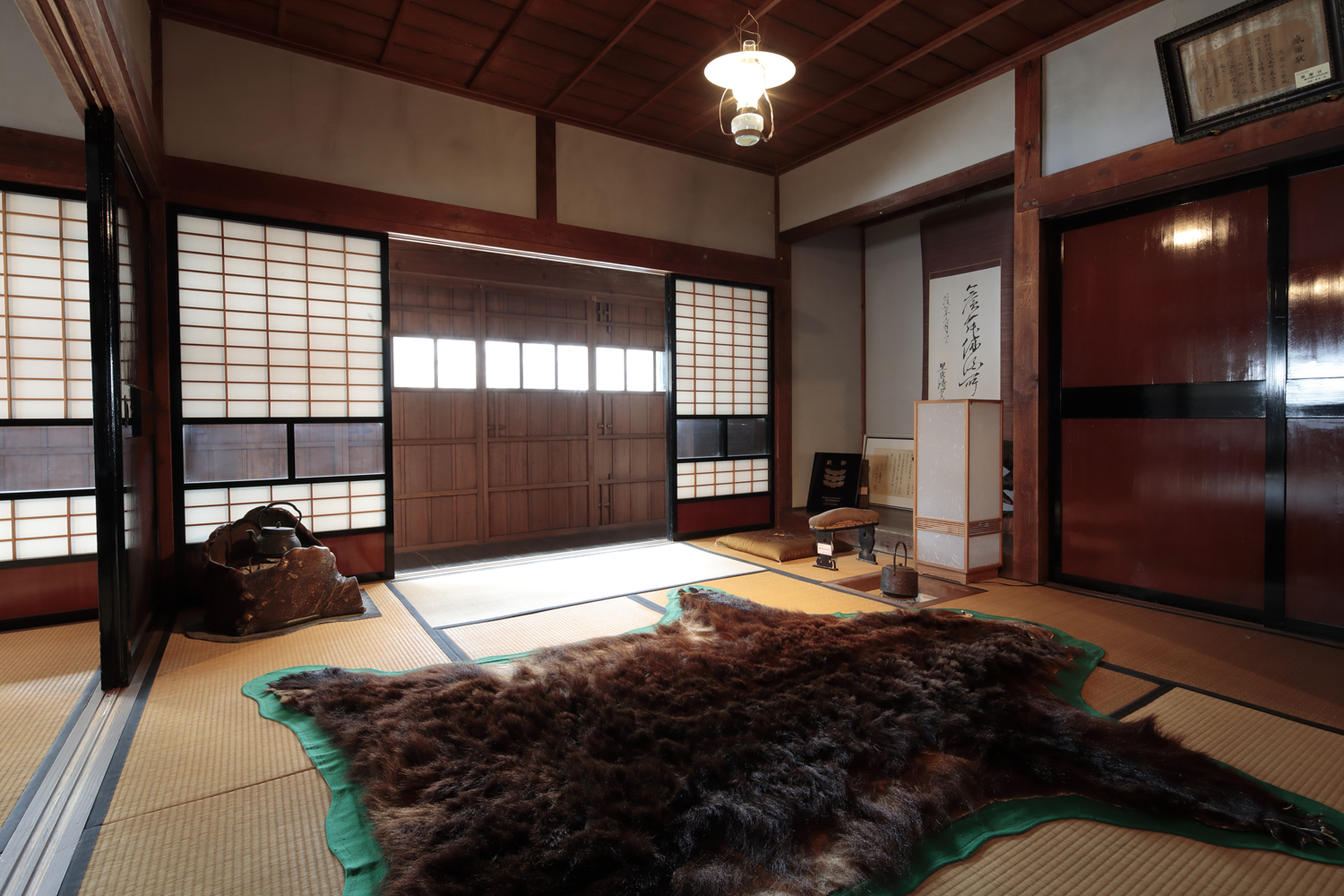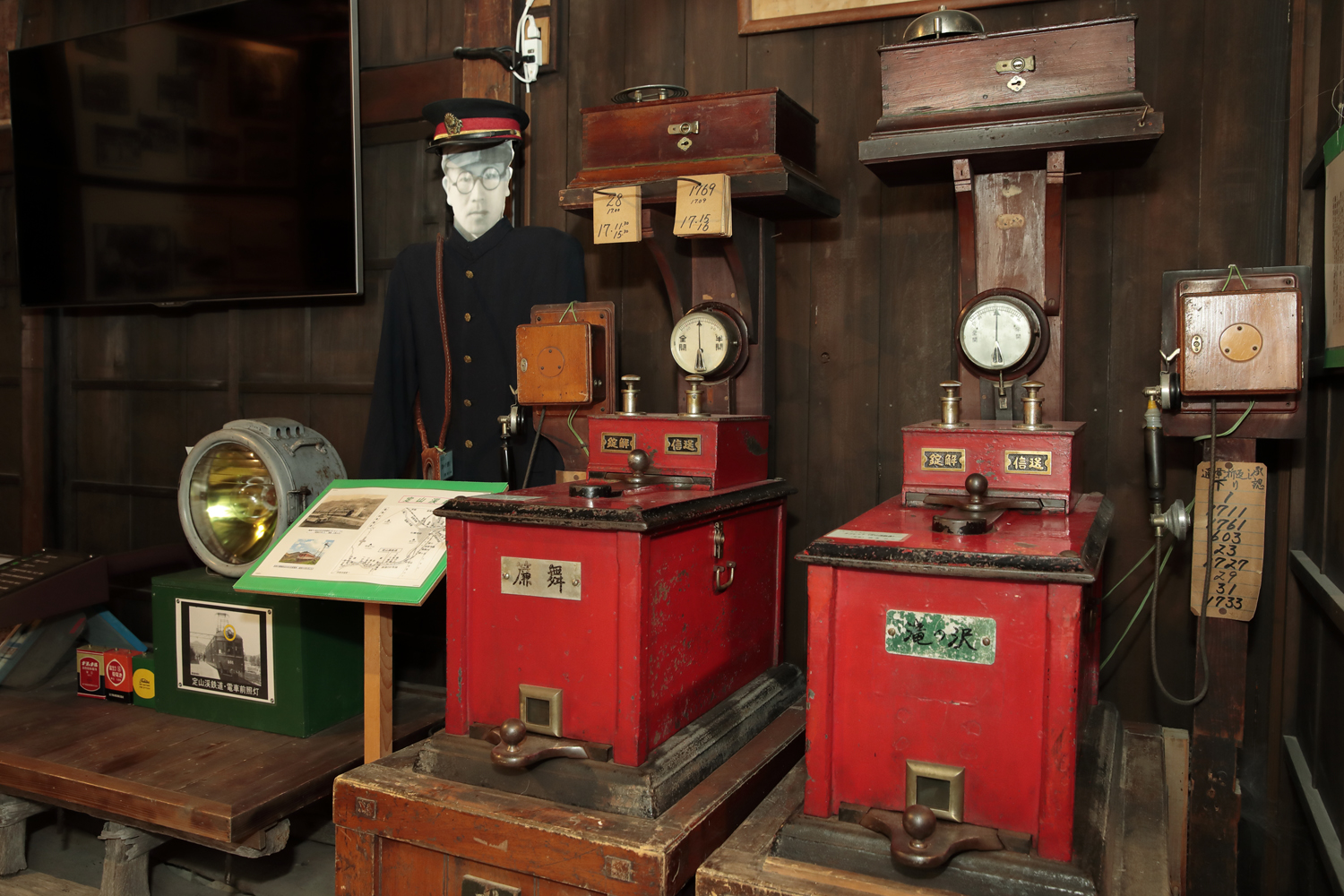
Interior of the Old Kuroiwa Residence. The entire building is Japanese style, but the roof is a Western-style structure.

Interior of the Old Kuroiwa Residence. The entire building is Japanese style, but the roof is a Western-style structure.
In the Misumai district, located in the southern part of Sapporo on the way to Jozankei, stands a large house that retains the atmosphere of the Meiji period. Inside is a guest room with a long porch, and displays of the history of Misumai, including utensils used in the daily lives, which prospered thanks to forestry and agriculture.
In 1869, when the Kaitakushi (Hokkaido Development Commission) decided to set up headquarters in Sapporo, a plan was proposed to construct a road connecting Sapporo and Usu, but the Kaitakushi never got around to it because of the huge costs involved. In the meantime, Higashi Honganji Temple applied to the government for permission to develop parts of Hokkaido and in July 1870 began constructing a new road. In October of the following year, a 104-km road was completed from present-day Date to Hiragishi, Sapporo, and came to be known as the Honganji Road.
With the opening of the road, the Kaitakushi built an accommodation lodge and rest house for travelers in Misumai, a key location. This was the Misumai Tsukoya. At the time, Kuroiwa Seigoro – who was in southern Hokkaido by order of the Hakodate Magistrate's Office – received a special mission from the Kaitakushi and, together with his wife and eldest son, became the first permanent resident of Misumai. At that time, Misumai was undeveloped and there was not a single house in the surrounding area; wolves and brown bears roamed around and, in winter, the area was buried beneath deep snow.
Kuroiwa Yutaka, the fourth generation of the Kuroiwa family, says, “It’s amazing that they settled in a place where there were so many bears!”
Later, when the Sapporo main road leading to Muroran via Chitose (present-day Route 36) was completed in 1873, the number of people using the Honganji Road gradually decreased. Nevertheless, Seigoro devoted himself to cultivating the land in Misumai, while working as the lodge keeper there. In winter, he cut down the trees in the primeval forest, and in summer he cultivated the land with a hoe, creating fields to produce grain and vegetables.
In 1884, the tsukoya was closed, but the Kuroiwa family continued to operate their own inn, hosting officials who used the Honganji Road, while continuing to farm the land. Three years later, when a new road leading to Jozankei (present-day Route 230) was opened, the building was moved a little further north from its original location, and a living room, earthen floor and stable were added, and its appearance remains almost the same today.

Kuroiwa Yutaka, who lived in the building until the 1980s

The rooms remain as they were in the early Meiji period (late 1860s–early 1870s)

The oldest remaining photograph, taken in 1907
In the past, Misumai was synonymous with apples, a tuberculosis sanatorium in Shirakawa, and brown bears. Yutaka says, “There were many people who encountered or battled with brown bears. They had to coexist with them in order to lead their lives.”

A display in which the lifestyle of the time is recreated

A bearskin laid out in the guest room

1949(昭和24)年ころ、薪ストーブを囲む黒岩家の人々。中央で抱かれているのが9人きょうだいの末っ子の裕さん。「ストーブの部屋だけが暖かく、ほかはシベリアでした」
In 1981, due to the aging of the building, the Kuroiwa family decided to build a new residence next door. At the same time, they consulted with the Sapporo City Board of Education to see if the building could be preserved as a cultural asset, and a survey was conducted, resulting in the old part of the building being designated by Sapporo City as a tangible cultural property. The building and land were donated to the city, and from 1984 to 1985, a complete demolition survey and restoration work were conducted.
The newer part of the building is also a valuable reminder of the life of farmers in the Meiji era, and it was decided to preserve it as a Sapporo City museum of local history. Although the restoration work was complete, it was necessary to collect items appropriate for a museum, provide explanations, and arrange the exhibits. To this end, Yutaka and other residents of Misumai formed a preservation society to carry out the work.
“The materials on display were mostly collected by the local elders, including a life-size stuffed horse that they made,” says Yutaka.
One of the most prominent items related to the Jozankei Railway is a tablet-style signaling block device, which was once used at the station. Yutaka found the machine at a local hot-spring hotel and acquired it.
Yutaka is currently in the middle of writing the “150 Years of Misumai” manuscript.

The tablet signaling block machine

(Photo courtesy of Sapporo City Community & Cultural Promotion Bureau, Cultural Assets Section. Photographed by Kurose Michio)
Old Kuroiwa Residence (Former Misumai Tsukoya) 
Misumai 1-jo 2 chome 4-15, Minami-ku, Sapporo, Hokkaido
Tel.: 011-596-2825 (site manager)
Open: 9:00–16:00
Closed: Monday (following day if Monday is a public holiday), the day after public holidays and the year-end/New Year period
Admission free
Website (Sapporo City Community & Cultural Promotion Bureau, Cultural Assets Section)